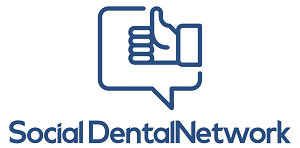According the always visible and mostly reliable Wikipedia, stem cells are biological cells found in all multicellular organisms, that can divide through mitosis and differentiate into diverse specialized cell types and can self-renew to produce more stem cells. In mammals, there are two broad types of stem cells: embryonic stem cells that are isolated from the inner cell mass of blastocysts, and adult stem cells that are found in various tissues.
Make sense?
Basically stem cells act as an internal repair system in our bodies, regenerating cells, tissue, and even organs. Although the science and research is still evolving, dental stem cells could represent a quantum leap in our normal everyday dental care.
In 2000, scientists with the National Institute of Health discovered stem cells in both baby teeth and wisdom teeth. The NIH also points out; dental stem cells are adult stem cells, not the controversial and often debated embryonic stem cells. In addition, dental stem cells are a lot easier to obtain and less invasive than bone marrow stem cells.
Will it be possible to actually grow a new healthy tooth to replace a missing one?
As reported by a recent Provia Labs press release, although experiments in growing new teeth remain early-stage research, other applications of dental stem cells have already been demonstrated in human studies. These cells have been successfully used to regrow jawbone and treat periodontal disease.
One of the leaders in the world of dental stem cells is Dr. Paul Sharpe, a recent speaker at The First International Conference on Dental and Craniofacial Stem Cells that took place last week in New York City.
“In the future we envision,” explains Dr. Sharpe, “a patient who loses a tooth and wants a replacement will be able to choose between current methods and a biological-based implant—a new natural tooth—derived from the patient’s own dental stem cells.”
Store-A-Tooth™, a division of Provia Labs, goes on to mention how scientists and clinicians are investigating many additional uses for dental stem cells, from treating root canals to even regenerating whole new teeth. The earliest applications for dental stem cells are expected to be the repair of damaged tooth structures and craniofacial defects, bone regeneration, and possibly the treatment of neural tissue injury or degenerative diseases.
The Store-A-Tooth website goes on to mention how dental stem cells are also being studied as a way to help treat a number of medical diseases and conditions:
– Diabetes
– Spinal cord injury
– Muscular dystrophy
– Stroke
– Myocardial infarction (heart attack)
– Liver disease
– Cornea repair
– Parkinson’s disease
– Alzheimer’s
Is this all too far away to imagine a practical application of dental stem cells?
Should we all start banking away our dental stem cells for future withdrawal?
How say you?
For more information about stem cells, visit the National Institutes of Health’s Stem Cell Information page at http://stemcells.nih.gov/info.

